第149章 SOCIAL SCIENCE AND SOCIAL ART(5)
In order to test the scientific claim let us take what seems to be a very different sort of action from that of the politician or the business man, that of the artist.Follow the mind of the painter as he plies his art.Each of his operations too involves considerations of quantity and measurement, scope and focus, adjustment, coordination, balance, the application of definite blends of colours: optics, anatomy, and other sciences feed his mind with exact knowledge.A delicate adjustment of quantities in line and colour is involved in every part of his artistic operations.But does the operation consist of these quantitative arrangements and can it be understood or 'appreciated' by analysing them? Evidently not.Why not?
Because in such an analysis or explanation the essentially qualitative or creative action of the artist, which gives unity and artistic value to the whole operation, escapes notice.Science kills in order to dissect.
So in the case of every other art.A poem involves certain ordered arrangements of sound which may be expressed in quantitative terms of rhythm and prosody.
But any attempt to 'resolve' it into these forms loses its spirit, its unity, its value as a poem.Students of the drama have sometimes explained or interpreted a tragedy of Sophocles or Shakespeare in terms of the gradation of intensity of the various emotions involved, the length of pauses of suspense, the balancing, relief and interlacing of the plots or episodes, the relative strength or height of the climaxes and subclimaxes, the growing rapidity of movement towards the catastrophe.But can it be pretended that this 'mechanics' of the drama can furnish a standard of appreciation, or supply laws according to which a 'good' drama may be constructed or appreciated?
No.An artistic operation is essentially organic, creative and qualitative.
None of these characters can really be reduced to quantity.Science by quantitative analysis can only deal with the skeleton not with the life that informs it.
I think this eternal inability of science adequately to interpret value, or explain a work of art, will be generally admitted.It is due to the fact that this work and its value are inherently incapable of being reduced to quantities.The difference between one picture and another, one poem and another is a difference of quality.It is of course true that by a merely linguistic necessity we often speak of a picture as being 'much'
finer than another, and compare the 'greatness' of one poet with that of another.But we are aware all the time that we are really comparing unlikes, dealing with qualitative differences.On no other supposition indeed can we understand the valuation set upon a work of genius as compared with one of talent.
"Oh the little more, how much it is, And the little less what worlds away."What then do economists mean when they insist that qualitative differences, the desires and satisfactions which have such widely diverse origins and natures, can be weighed and measured against one another, and that problems of industry are essentially and ultimately quantitative? Our examination of artistic activities has shown that in each case quantities are involved, but that in no case do quantities constitute the problem of action.But how, it may be said, do you dispose of the admitted facts that by means of monetary valuations these diverse desires and satisfactions are reduced to a common standard, are compared, and that a course of conduct is apparently based upon these quantitative considerations?
The answer is that this is an entirely illusory account of the psychical process by which a man lays out his money, or his time, or his energy.
He does not take the several uses to which he might apply the means at his disposal, reduce them, in thought or in feeling, to some common term, and so measure the amount he will expend upon each object that the 'marginal'
or 'final' portion of each use shall be exactly equal in the utility it yields.The 'marginalist'7 is correct in saying that the utility imputed to the last sovereign I expend on bread during the year must be considered to be neither greater nor less than that imputed to the last sovereign's worth of tobacco, or books, holiday or charitable subscriptions.In precisely the same sense it is true that the last brushful of green and brown and Turkey red expended on a picture has the same art-value to the painter.
Perhaps the issue can be made clearer by reference to an art usually considered less 'fine' and more closely affected by quantitative considerations than painting, the culinary art.The composition of a dish is here expressed in proportions of its various ingredients, so much flour, so many ounces of raisins, so many eggs, so much sugar, etc.The marginalist would dwell upon the crucial fact that the last pennyworth of the flour, raisins, eggs and sugar, taken severally, had an equal value for the pudding, and that these marginal or final increments were in some way causal determinants of the composition of the pudding, because in using the ingredients the cook took care to use just so much of each, and neither more nor less.
And it is quite true that the delicacy of the culinary art will in fact be displayed in deciding whether to put in another handful of raisins, another egg, or a spoonful more sugar.But, from the standpoint of trying to appreciate the virtue or worth of the dish as a culinary creation, it cannot be admitted that any special importance or causal determination attaches to the last increments of the several ingredients.For it is evident that the 'how much' and therefore the 'margin' of each ingredient is itself determined by the conception of the tout ensemble in the mind of the creator or inventor.